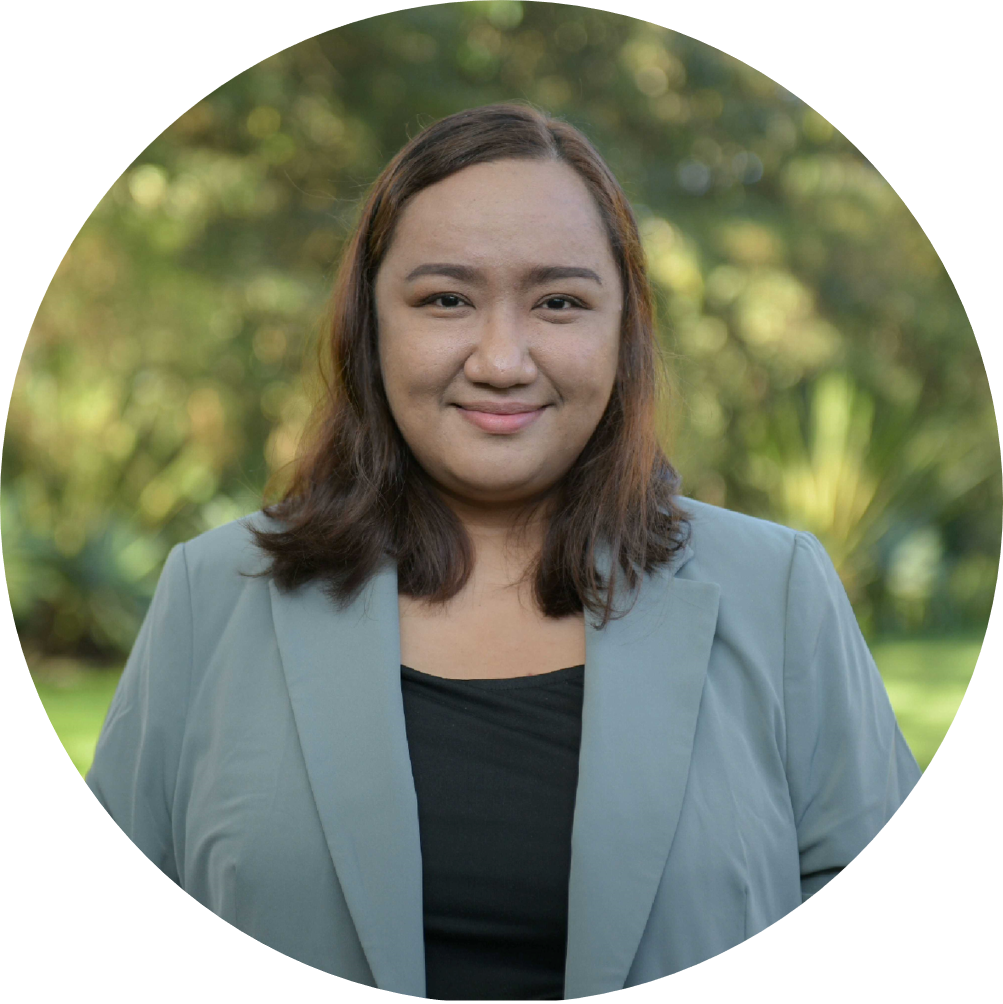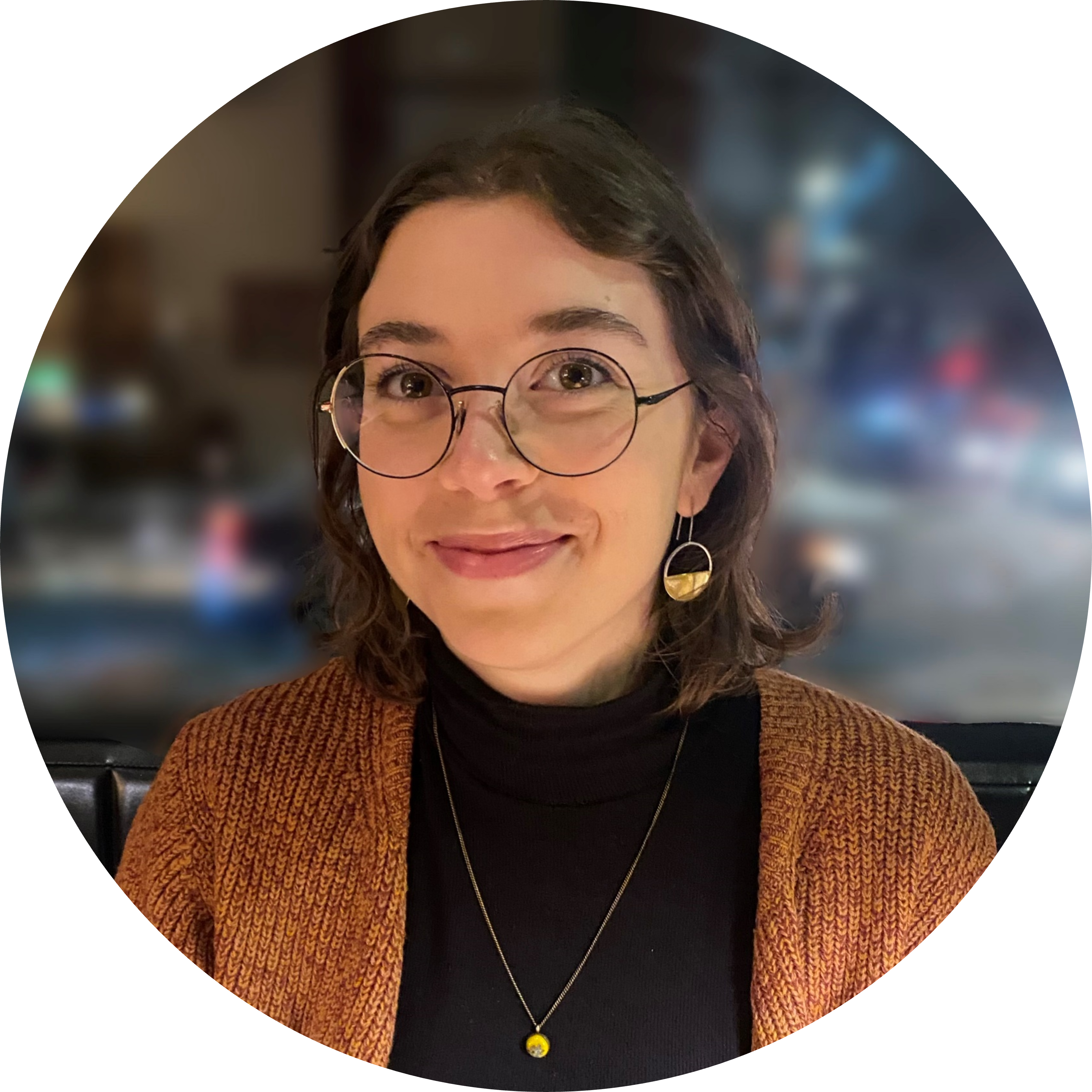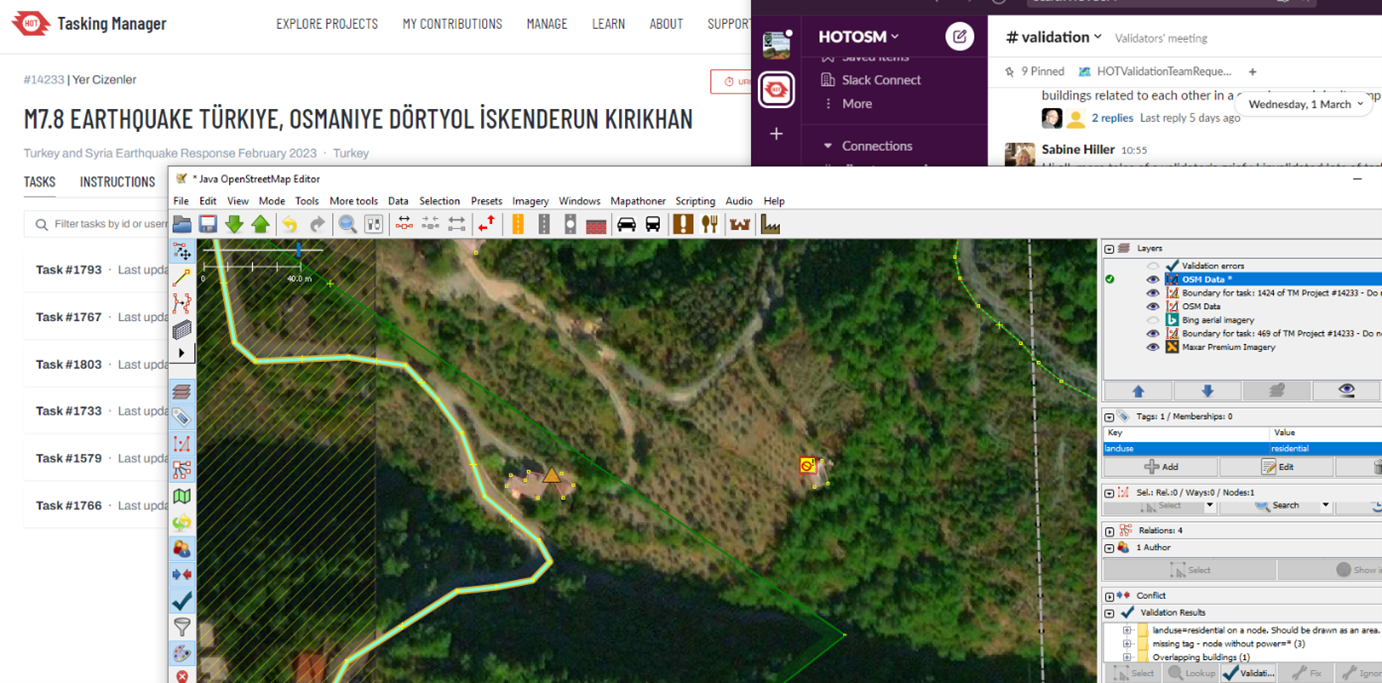Among the Missing Maps contributors, validators are few and they are instrumental for mappers’ growth, as well as the data quality. Women validators are even rarer. For the International Women’s Day 2023, three women validators from different countries shared their unique perspectives.

Honey Grace Fombuena, member and volunteer at OSM Philippines and GIS Associate with Open Mapping Hub Asia Pacific
Why is validation important for you and the organisation you support?
One of the main reasons why I map in OSM is to utilize geospatial data to understand and solve real-world problems in our communities. It is also consistent with the long-term goals of the Open Mapping Hub Asia-Pacific, which are to (1) accelerate the use of OSM data and (2) improve its coverage and quality. These two goals are linked because we can only make these OSM data use cases a reality if we first build trust with our users by ensuring that they can download high-quality and large-quantity data from OpenStreetMap. All of this is possible thanks to the validation efforts of OSM validators all over the world.
How does validation square with your professional life?
Validation, just like my professional life, is a path of continuous learning and growth. You may start as a validator thinking that you can make it with all your theoretical knowledge, which is like the confident fresh university graduate that I used to be. Confidence is good, but just like in validation, you will learn later on that we can only improve by applying these theories to solve errors that we encounter along the way. And we will often make mistakes, but that is okay. It is also good to surround yourself with people you can learn from and be accountable with. Sometimes, it can be overwhelming. That is why both in validation and in my professional life, I always take it one task at a time.
What would you say to women who have been mapping for long enough and have not started validating yet?
I would like to motivate them to look at validation as an opportunity to be a mentor to other women mappers in OSM. It is a unique experience that will allow them to connect with other parts of the world and learn new perspectives that will shape them not only as an OSM mapper/validator, but also as a woman taking up space in a gendered geography.

Sophie Gélinas-Gagné, GIS Officer at the Canadian Red Cross
Why is validation important for you and the organisation you support?
I’m a GIS Officer at the Canadian Red Cross, where I work with validation in two ways. First, the Canadian Red Cross hosts mapping projects on the Tasking Manager as part of our Missing Maps program. With the help of our volunteers, I validate the work of mappers on those projects. In this case validation is important mostly for data quality; to ensure that the data added to OSM is up to the OSM and the Canadian Red Cross’s standards.
The second way I work with validation is through a live-review process during mapathon events, where I review the data added to OSM by mapathoners in real-time. While this is not validation per say, I still use the same techniques and tools as validators, without looking at all the data in the task, only what the mapper in the event added. This review process is important to the CRC because it helps participants develop their mapping skills: taking the time to look at the data produced by each mapper and sending feedback makes a real difference in participant’s work and attitude towards their work. Mapathon participants who map very well off the bat, enjoy the positive feedback, and it motivates them to join other events. Those who made a few mistakes here and there, learn and improve their mapping data. It also helps me provide the best event facilitation. In one event for example, while buildings were well mapped, I noticed fictional mapping from many of the participants (mapping elements of the imagery that should not be mapped). It indicates that in the next event with them, rather than spending most of my time on mapping techniques, which they already mastered, I should emphasize the interpretation of satellite imagery and encourage them to share their screen when they are not sure if they should map a feature.
How does validation square with your professional life?
Validation is currently part of my professional life. While I do see myself contributing as a validator voluntarily in the future, it is not an option at the moment; working as a GIS staff and validating on the side is a lot of mapping! However, in the future, if I step away from mapping in my professional life, I’d be happy to contribute voluntarily from time to time.
What do you find helpful for mapping and validation?
I found that following the HOTOSM Slack channel content, such as #validation, is very useful for mapping, validating and mapathon event facilitation. For the Türkiye/Syria Earthquake Responses mapping campaign for example, the comments from the validators on common mistakes they have noticed, or on the proper way to map the densely populated areas have been very useful. All these comments help me guide new mappers on how to contribute good data, and hopefully to reduce the amount of work for the validators.

Sabine Hiller's screen when validating HOT Tasking Manager tasks in JOSM
How did you become a validator?
I discovered mapping in 2016 (first through MapSwipe and then through the Haiti hurricane activation). As I’ve always had a keen interest in social and global justice, it was no surprise that Crowd2Map’s fight against gender-based violence appealed to me. I cut my teeth on project 1788, but never thought of becoming a validator. I was quite happy mapping away and, like many women, thought the responsibility and expertise needed for validation would just be beyond me. When I was invited to validate, I initially felt horrified… For a long time, I felt under-qualified and uncertain: Did I misread the imagery? Should I leave feedback on the work of those ‘superior’ to me? But I also ealized how important validation is, not just for data quality, but for giving constructive feedback and keeping mappers engaged. That kept me going. To be honest, sometimes I do get bored with it, but knowing that there are so few validators and seeing the data being used by organisations on the ground makes it all worthwhile.
How does validation square with your professional life?
The phrasing of this question reveals part of the problem. We think of one kind of person, probably urban, probably young, probably techy, in any case career-focused, as the prime candidate for validation. This assumption that she has a professional life, not only excludes the many women who “merely” hold down a job, but also those who are unemployed, under-employed or post-employment. They may have to square their online volunteering with multiple demands on their time, unpaid care for example, but not necessarily a professional life. I suspect that a young, career-focused person may contribute for a while, not least because their CV has to feature some sort of volunteering, but they are less likely to commit to the time investment necessary to gain the proficiency needed for validation. There is a huge pool of women (globally about half of women) who are not in paid employment, who may well be very busy, but more flexible timewise and who also yearn to contribute beyond their private sphere. Personally, I currently combine my time behind the laptop with work outside (growing most of our vegetables & fruit, besides planting trees for coppicing and for biodiversity), so depending on the time of year and weather conditions, there can be some gaps in my mapping log!
How do you mentor new mappers?
I developed the Crowd2Map digital badges, which despite their limitations (created in a rush) have been successful not only in eliminating the worst beginner mistakes but also in giving mappers the confidence to continue mapping and enabling mentoring to start at a much higher level. Individualised feedback – as done at C2M – is fantastic, but hardly scalable, especially when dealing with large, complex projects, like the Turkey/Syria activation. The only way around this is, in my eyes, obligatory training. Something along the lines of the C2M badges, but updated and more interactive, would help not only to train new mappers, but also weed out those who are not invested enough to contribute more than one or two dodgy changesets. After all, it’s not the number of contributors that matters, but whether or not they produce usable data.
What can we do to mentor new women validators?
Considering that only 10% of validators are women (based on personal estimates), there is clearly something amiss, which can’t be remedied by recommendations on mentoring. After all, new mappers seem fairly equally represented in terms of gender. Something is happening in between, something that prevents women from fully participating. And as you cannot combat inequality unless you know the extent of it (personal estimates are not enough), the first step should be the gathering of data. In the meantime, I can only share some personal hunches as to the causes.
First of all, there is digital literacy. Several women friends (all post or part-employed) have asked me about mapping - none of them are techy. There are a lot of very tech-savvy people in HOT and it is easy to feel intimidated. To become a validator, you need to learn JOSM, and a lot of non-techy mappers will baulk at that. The pool of non/post/part-professional women I mentioned will include many who have never seen a line of code in their lives and even though they may be great at reading the imagery, might need extra support to progress technically.
Secondly, structures and tone matter: There is a need for more transparency within HOTOSM (where and how are decisions made?), and awareness of the tendency to toxic positivity (which can be understood as the belief that no matter how dire or difficult a situation is, people should maintain a positive mindset – note of the editor). Another issue is responses that are obscured by references to unspecified insider information. It may be a habit that people are not even aware of, that they bring with them from their day job, but it can make volunteers reluctant to persevere. We feel fobbed off and will turn quiet as a result - which ultimately means problems won’t be tackled, potential solutions not implemented.
While there are a lot of incredibly supportive people at HOTOSM, we have to search for causes within both the organisational structure and the general culture. Structures and tone matter when you want to promote the participation of an underrepresented group. And if really only 10% of validators are women, something has to change. I hope that other women, whether they are mappers or future validators, feel inspired to speak up.